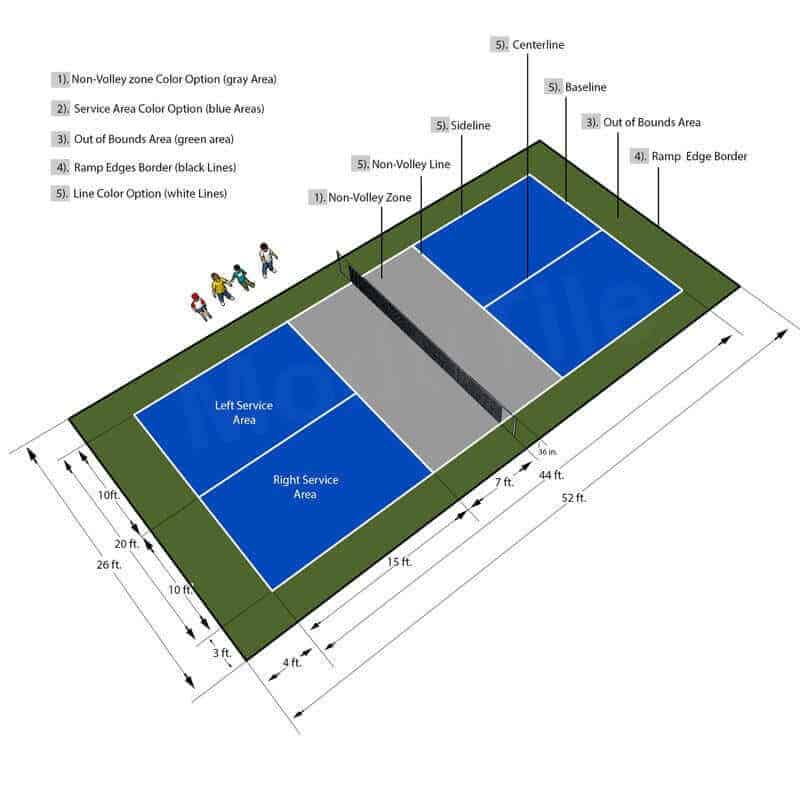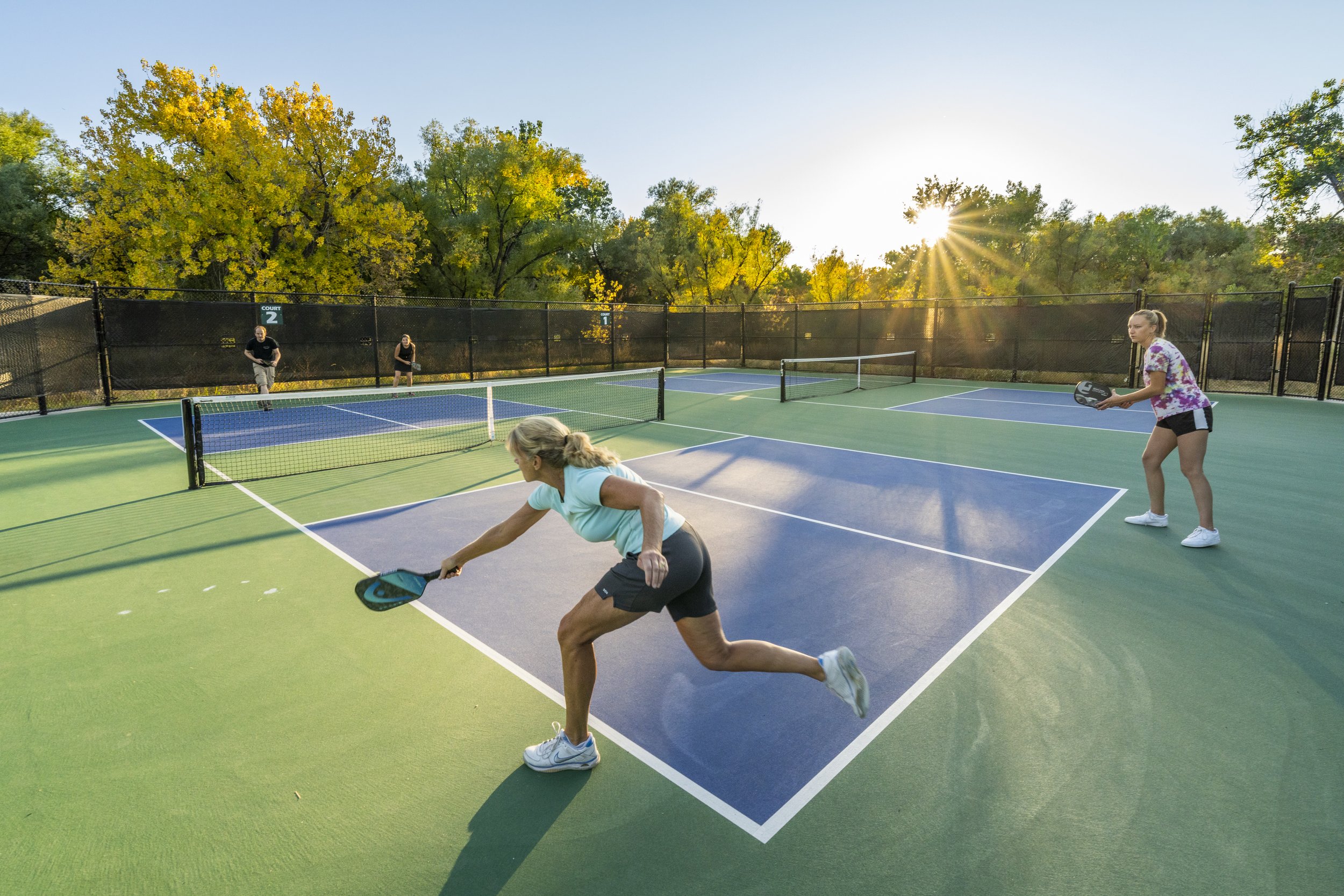How to Select the Right Products for Pickleball Court Construction
Increase Local Interaction With Community-Driven Pickleball Court Projects
The emergence of community-driven pickleball court projects offers a distinct opportunity to promote local involvement and reinforce area ties. By proactively involving homeowners in the planning and implementation phases, such initiatives not just produce entertainment areas yet likewise advertise a shared feeling of possession. Comprehending the actions to initiate these jobs, consisting of efficient stakeholder involvement and resource allowance, is essential. The genuine inquiry remains: exactly how can these grassroots initiatives be purposefully executed to make sure sustainability and inclusivity in varied communities? Exploring successful instance researches may offer the understandings required to address this pivotal issue.
Significance of Area Involvement
Community involvement is a critical aspect in the effective growth of pickleball court projects, as it cultivates a feeling of possession and cumulative responsibility amongst residents. When neighborhood participants are proactively associated with the planning and implementation phases, they are more probable to support for the project's long-lasting success. Involving stakeholders such as local gamers, households, and recreational groups guarantees that the centers fulfill the diverse demands and choices of the community.
Moreover, area engagement grows a helpful environment where homeowners really feel empowered to add their ideas and resources. Pickleball court construction. This collective strategy can lead to innovative services that enhance the layout and functionality of the courts, making them much more appealing to a broader target market. In addition, involving residents in decision-making procedures can enhance social ties, promoting inclusivity and unity within the neighborhood
The exposure of community assistance for a pickleball project can additionally play an essential duty in protecting funding and authorization from local authorities. By demonstrating a shared commitment to recreational advancement, communities can successfully promote for sources and policy modifications that prefer the facility of pickleball courts, ultimately improving the local culture and entertainment landscape.
Steps to Launch a Project
Starting a pickleball court project requires a methodical approach that improves the structure of area involvement established in previous conversations. The very first step is to assemble a project board comprising neighborhood stakeholders, enthusiasts, and reps from relevant companies. This varied group guarantees that multiple point of views are considered.
Following, conduct a needs evaluation within the area. Studies, focus groups, and public conferences can be efficient in evaluating passion and gathering input on possible court locations, preferred facilities, and organizing choices. Following this, establish a task strategy outlining objectives, timelines, and responsibilities.
When the plan is in area, involve with local authorities to comprehend zoning guidelines and any type of necessary authorizations. Communicating transparently with the community throughout this procedure is crucial, as it promotes trust and encourages further engagement.
Additionally, organizing area occasions can aid maintain energy and interest. These events can act as platforms for more discussion and aid to enhance neighborhood ties. Lastly, file every step taken and preserve in-depth records, as this will be useful for future phases of the task, including funding and source purchase.
Funding and Resources Available
Protecting funding and sources for a pickleball court task is typically a vital step that can identify the project's feasibility and success. Different methods exist for acquiring monetary assistance, ranging from public funding to exclusive sponsorships. City government grants, commonly targeted at promoting neighborhood health and recreation, can provide considerable sponsorship for such initiatives.
Along with government resources, not-for-profit organizations and foundations often provide gives particularly for sporting activities and area advancement projects. Engaging regional companies as enrollers can also be a worthwhile strategy; lots of firms aspire to purchase community efforts that boost their company social obligation account.
Crowdfunding systems have become a viable alternative for grassroots fundraising, allowing community participants to add directly to the job. This strategy not only elevates funds but additionally promotes a feeling of ownership amongst participants.
Layout and Planning Considerations
Reliable layout and planning are fundamental parts of any effective pickleball court job following the procurement of financing and sources. An extensive assessment of the recommended area is essential; this consists of evaluating access, proximity to existing community facilities, and the capacity for visibility and engagement.
The format of the court should abide by main size specifications while taking into consideration the surrounding environment. Integrating attributes such as seating, color frameworks, and ideal lighting can substantially enhance gamer experience and viewer pleasure. Products chosen for the court surface area ought to prioritize durability and safety and security, with choices like acrylic or asphalt offering optimal efficiency.
Including community participants in the style procedure fosters a feeling of ownership and makes sure that the facility fulfills regional demands - Pickleball court construction. This can be achieved via public assessments and studies, enabling stakeholders to express their choices and problems
Sustainability needs to additionally be a top priority; incorporating environment-friendly materials and techniques can add to long-term stability. Finally, creating an upkeep plan to ensure the court continues to be in superb problem will sustain ongoing area involvement and engagement in pickleball activities.

Success Stories and Instance Studies
Highlighting the transformative influence of community-driven learn this here now initiatives, numerous success tales show how collaborative efforts have led to the growth of vivid pickleball courts across different areas. One remarkable instance is the campaign in a tiny town in Florida, where homeowners affiliated to convert an underutilized tennis court into a specialized pickleball center. With fundraising occasions and collaborations with local services, the neighborhood increased enough funds to mount brand-new nets, resurfacing, and lines, inevitably fostering a lively hub for neighborhood gamers.
Similarly, in a rural area of The golden blog here state, a grassroots activity arised to create pickleball courts in a regional park. The task not only involved volunteers for building and construction yet also consisted of workshops to involve area participants in the sporting activity. As an outcome, the courts became a centerpiece for social communication and physical fitness, drawing in players of every ages.
These case studies exemplify how community-driven jobs can boost regional engagement, advertise exercise, and strengthen social bonds. By leveraging cumulative sources and enthusiasm, areas can efficiently maintain and develop pickleball centers that serve varied populaces and promote a feeling of belonging.

Final Thought
To conclude, community-driven pickleball court jobs serve as important tools for improving regional engagement and promoting a feeling of belonging amongst locals. By focusing on stakeholder involvement throughout the preparation and implementation phases, these initiatives can successfully attend to diverse area requirements. In addition, leveraging offered resources and examining successful case studies can provide valuable insights for future tasks. Inevitably, such efforts contribute to the change of public rooms right into dynamic facilities of physical fitness and social interaction, reinforcing neighborhood connections.
The introduction of community-driven pickleball court tasks presents an one-of-a-kind opportunity to promote local engagement and reinforce community connections.Area engagement is an important aspect in the successful advancement of pickleball court jobs, as it cultivates a feeling of possession and collective duty among residents. When neighborhood members are proactively involved in the preparation and implementation phases, they are extra likely to promote for the project's long-term success.Starting a pickleball court job calls for an organized strategy that builds on the structure of neighborhood interaction established in previous sites discussions. The task not only involved volunteers for construction but additionally included workshops to involve area members in the sporting activity.